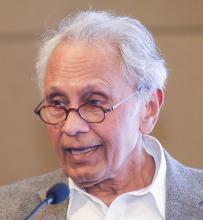
Pravin Varaiya, UC Berkeley, presented Towards Vision Zero: Intelligent Intersection Infrastructure to enhance safe operations of (self-driving) cars on March 23 in 502 Davis Hall at 4 p.m.
Abstract
Vision Zero plans concentrate on intersections that present a demanding environment. Challenges arise from complex vehicle trajectories; absence of lane markings to guide vehicles; split phases that prevent determining who has the right of way; conflicting vehicle approaches with no line of sight; illegal movements; simultaneous interactions among pedestrians, bicycles and vehicles. Unfortunately, many of the safety-improving tools that are available for practitioners are inadequate to address such challenges, and cannot support a roadway system with zero fatalities. Infrastructure-to-vehicle (I2V) technology based on an intelligent intersection infrastructure can provide the additional information needed to reduce the inherent complexity of intersections and prevent crashes.
